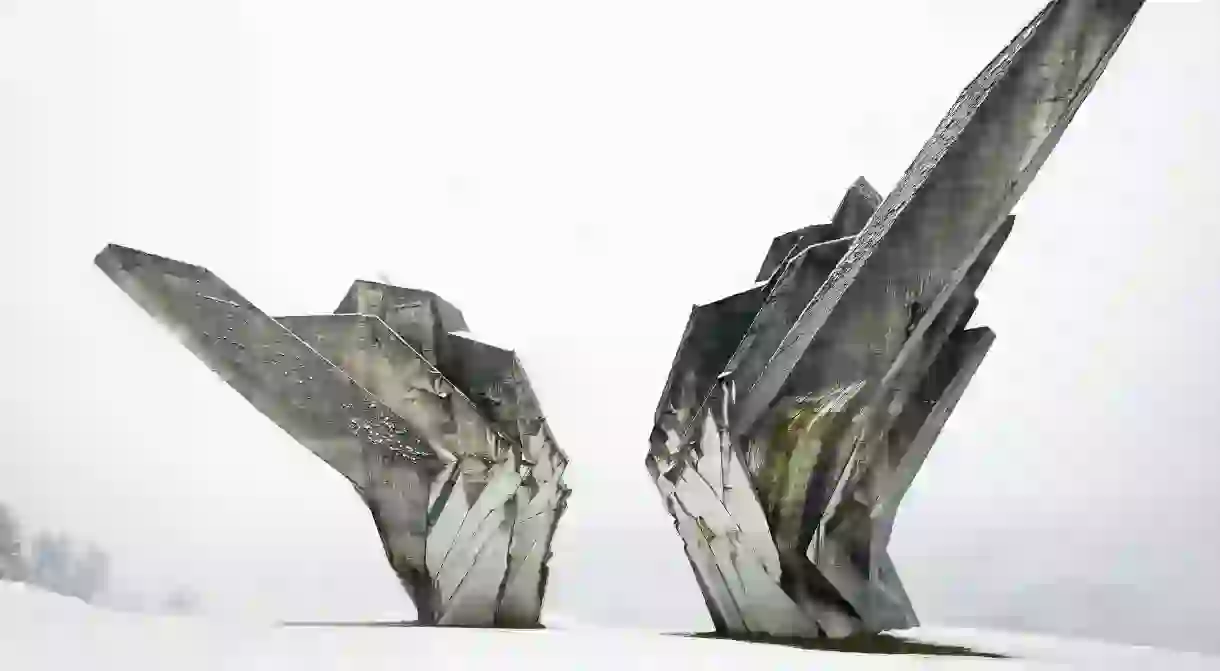MoMA Presents Former Yugoslavia’s ‘Concrete Utopia’ in New Architecture Exhibition

From International Style skyscrapers to expressive Brutalist structures, the Museum of Modern Art’s new exhibition Toward a Concrete Utopia: Architecture of Yugoslavia, 1948-1980 highlights former Yugoslavia’s unique range of architectural forms.

The Museum of Modern Art (MoMA) in New York City is hostingthe first major US exhibition to examine Yugoslavia’s architecture and civic space. Toward a Concrete Utopia: Architecture of Yugoslavia, 1948-1980, which runs until January 2019, reveals how architecture was used to create a collective history and enforce a utopian vision for the Socialist Federal Republic of Yugoslavia through imposing Brutalist forms and multifaceted structures from the former country’s post-war years. Six Socialist republics made up former Yugoslavia: Serbia, Macedonia, Montenegro, Slovenia, Bosnia and Herzegovina, and Croatia.

“Historically speaking, a thorough investigation of the architectural production of Socialist Yugoslavia will lead to a better understanding of an important but understudied chapter of architectural history in the bifurcated world order of the Cold War,” says Martino Stierli, The Philip Johnson chief curator of architecture and design at MoMA, in a press release.
“From a contemporary point of view, this body of work serves as a reminder that architecture can only thrive when there is a broad societal understanding of architecture’s power to transform and elevate society and the quality of life it offers its citizens.”

More than 400 drawings, scale models, photographs, and film reels are featured in the exhibition, including newly commissioned photographs by Valentin Jeck, contemporary artworks by performance and installation artist Jasmina Cibic and multidisciplinary artist David Maljković, and three video installations by filmmaker Mila Turajlić. In its entirety, the show investigates “architecture’s capacity to produce a shared civic space and common history in a highly diverse, multi-ethnic society,” depicting 45 years of the former country’s existence through themes such as large-scale urbanization projects, monuments, and memorialization.

“Given the country’s diversity, Yugoslavia’s architects responded to contradictory demands and influences, developing a post-war architecture both in line and distinct from the design approaches seen elsewhere and beyond,” the museum writes in their press release. Toward a Concrete Utopia looks at the global reach of Yugoslav architecture—particularly during the time period between its break with the Soviet bloc in 1948 and Josip Broz Tito’s death in 1980—and how its design became a manifestation of “radical pluralism, hybridity, and idealism.”

The exhibition is organized into four main sections, each revealing another complex layer to the cross-ethnic design collaborations that characterized the former Yugoslav state. The first section, ‘Modernization’, examines the rapid post-war urbanization of previously rural areas, which resulted in new construction technologies, including the rise of reinforced concrete structures that came to define Yugoslavia’s Socialist modernity. ‘Global Networks’ examines how newly independent international countries, particularly throughout Africa and the Middle East, influenced design. ‘Everyday Life’ highlights affordable housing and Socialist consumer culture; while finally, ‘Identities’ addresses how architecture was employed to unify Yugoslavia’s multi-ethnic regions, particularly in connection to the anti-fascist partisan movement after World War II.

“Modern architecture was a key instrument in the implementation of a utopian vision in a perpetual state of emergence,” writes MoMA. “Many of the featured visionary projects and executed buildings speak to architecture’s aspirational role in terms of both design and social impact.”
Toward a Concrete Utopia: Architecture in Yugoslavia, 1948-1980 will run from July 15 2018 to January 13 2019 at New York City’s Museum of Modern Art.













